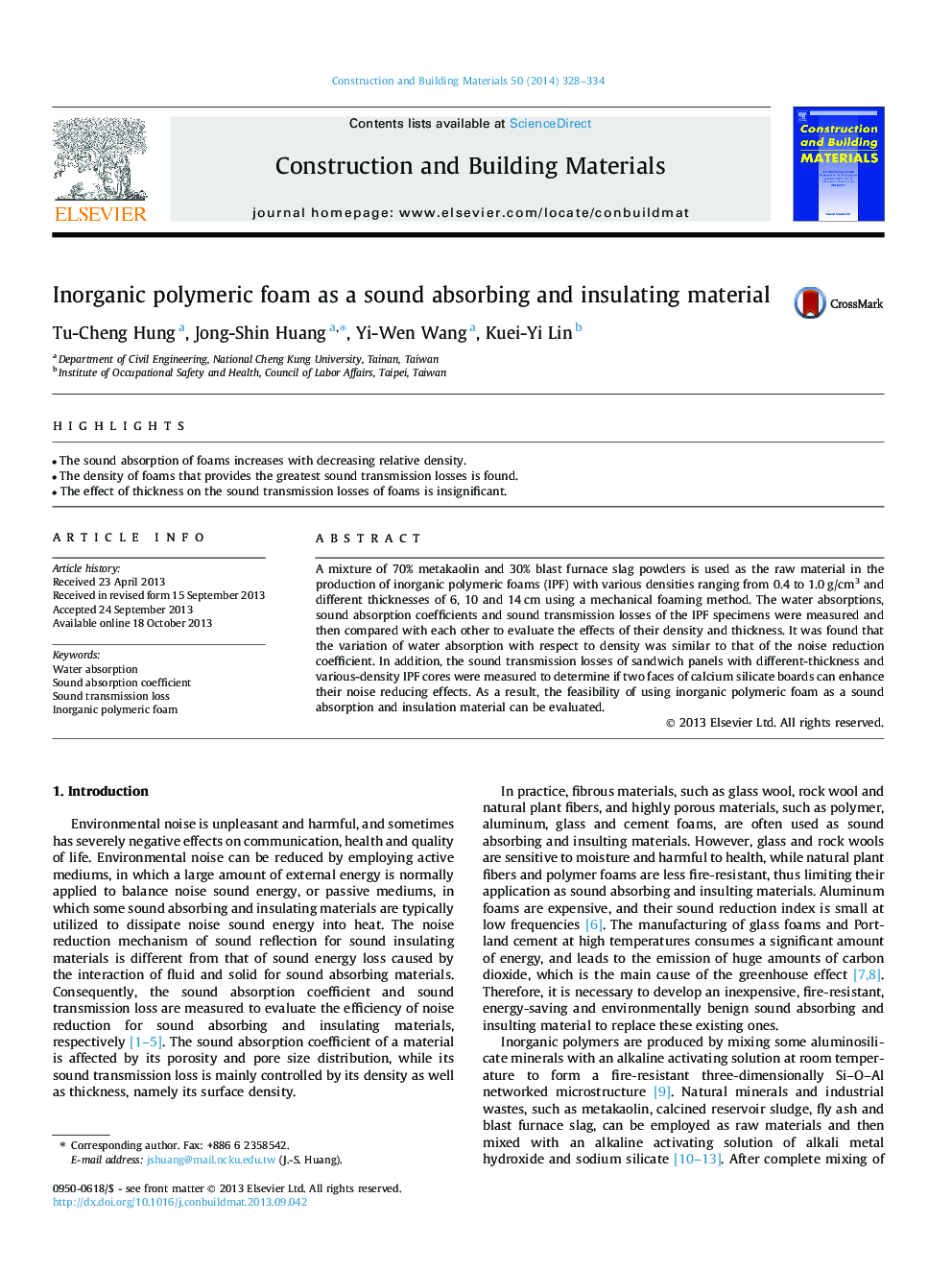| Article ID | Journal | Published Year | Pages | File Type |
|---|---|---|---|---|
| 257890 | Construction and Building Materials | 2014 | 7 Pages |
•The sound absorption of foams increases with decreasing relative density.•The density of foams that provides the greatest sound transmission losses is found.•The effect of thickness on the sound transmission losses of foams is insignificant.
A mixture of 70% metakaolin and 30% blast furnace slag powders is used as the raw material in the production of inorganic polymeric foams (IPF) with various densities ranging from 0.4 to 1.0 g/cm3 and different thicknesses of 6, 10 and 14 cm using a mechanical foaming method. The water absorptions, sound absorption coefficients and sound transmission losses of the IPF specimens were measured and then compared with each other to evaluate the effects of their density and thickness. It was found that the variation of water absorption with respect to density was similar to that of the noise reduction coefficient. In addition, the sound transmission losses of sandwich panels with different-thickness and various-density IPF cores were measured to determine if two faces of calcium silicate boards can enhance their noise reducing effects. As a result, the feasibility of using inorganic polymeric foam as a sound absorption and insulation material can be evaluated.
